MASSAGE FOR POLYCYSTIC OVARIES
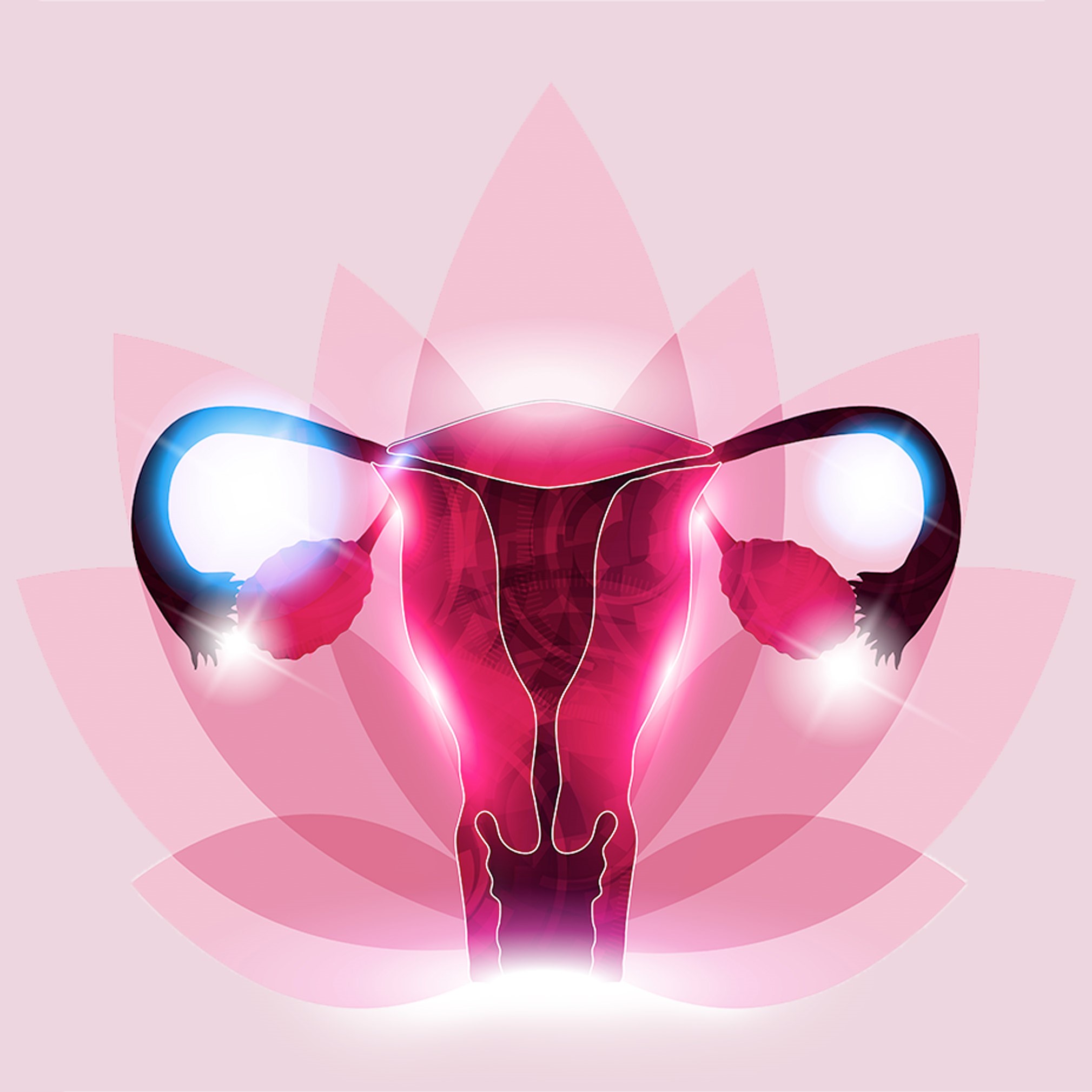
One in ten women suffer with polycystic ovary syndrome, a common hormonal disorder which triggers cysts to form in the ovaries. It can develop in women during teenage and childbearing years, and while up to 50% of cases are asymptomatic, PCOS is the leading cause of infertility in women.
There is an increased risk of complications such as diabetes and heart disease with PCOS.
CAUSES
The exact cause of PCOS is unknown, but possible causes include:-
- Genetics
- a disruption to the menstrual cycle due to hormone imbalance causing multiple follicles to grow in the ovaries. This results in:-
- the absence of one matured follicle required for ovulation , leading to infertility
- the multiple immature follicles are likely to become cysts which will produce male hormones.
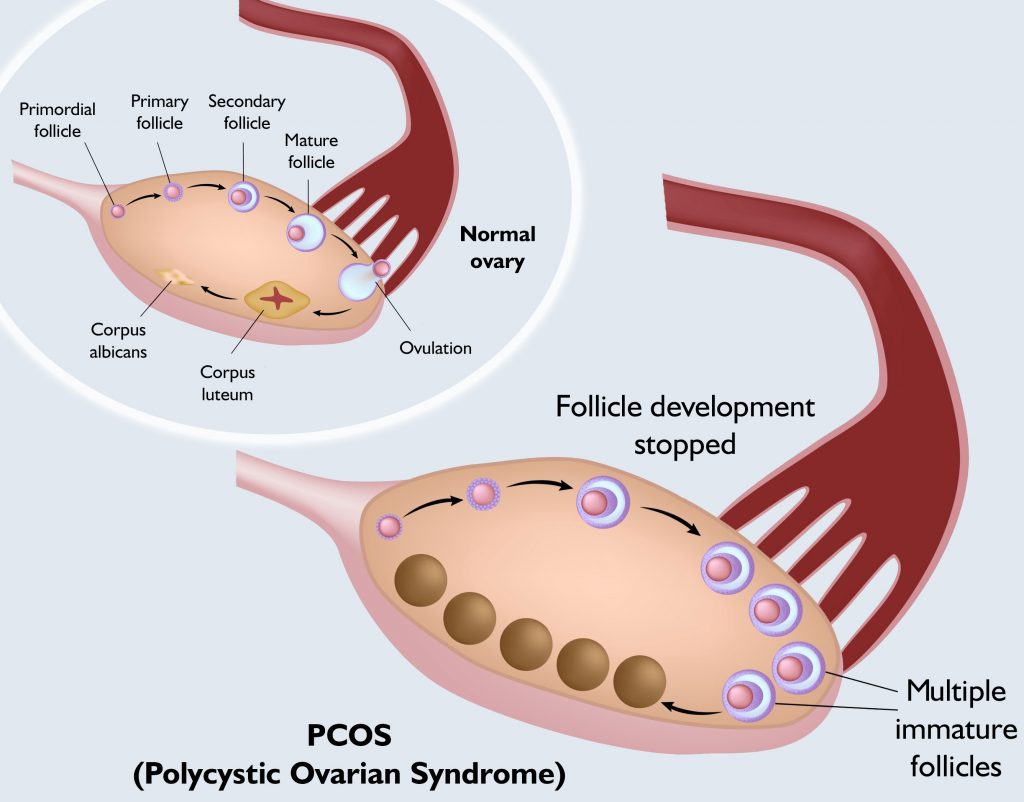
- high testosterone and luteinizing hormone levels and low follicle-stimulating hormone levels
- high levels of insulin to compensate for insulin resistance which can lead to increased production of hormones like testosterone
SYMPTOMS
Symptoms usually arise during the late teens or early 20s and the 3 main features of PCOS are:-
- IRREGULAR/ABSENT MENSTRUATION – menstrual cycles occurring less than eight times a year means that the ovaries don’t regularly release eggs
- HIGH LEVELS OF MALE HORMONES often causing excess facial or body hair, acne and male-pattern baldness
- POLYCYSTIC OVARIES – the ovaries become enlarged and contain numerous fluid-filled sacs (follicles) that surround the eggs
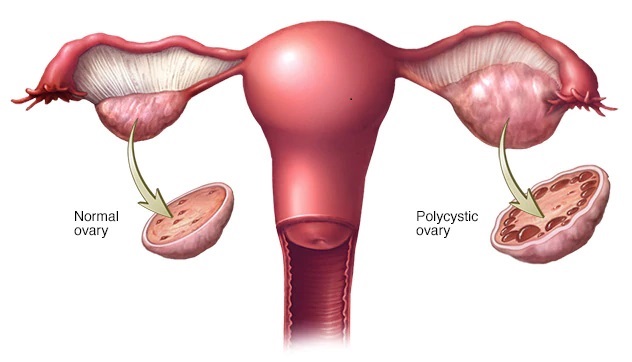
Other symptoms include:-
- INFERTILITY – due to the absence of ovulation
- OBESITY – approximately 50% of women with PCOS are obeseSKIN TAGS – usually on the neck or in the armpits
- DIABETIC TENDENCIES – high risk of type 2 diabetes and insulin resistance resulting in high blood sugar levels
- ACANTHOSIS NIGRICANS –the skin on the nape of the neck, armpits, inner thighs, vulva or underneath the breasts is darkened
ASSOCIATED CONDITIONS
The following conditions are more likely to occur alongside PCOS:-
- high blood pressure
- high blood cholesterol
- elevated levels of C-reactive protein
- non-alcoholic steatohepatitis
- sleep apnoea
- atherosclerosis
- heart attack
- type 2 diabetes
- metabolic syndrome
METABOLIC SYNDROME
According to research the incidence of metabolic syndrome among women with PCOS is about 11 times higher than for the rest of the population. It is a combination of at least 3 of the following features, which increases the likelihood of developing a life threatening condition (type 2 diabetes, atherosclerosis, heart attack, heart failure, aneurysm, and stroke)
- high fasting blood glucose
- abdominal obesity
- elevated triglyceride level
- slow levels of high-density lipoproteins
- hypertension
The following may also be relevant:-
- high risk of blood clotting
- high levels of C-reactive protein (an indicator of inflammation)
Insulin resistance connects PCOS with metabolic syndrome.
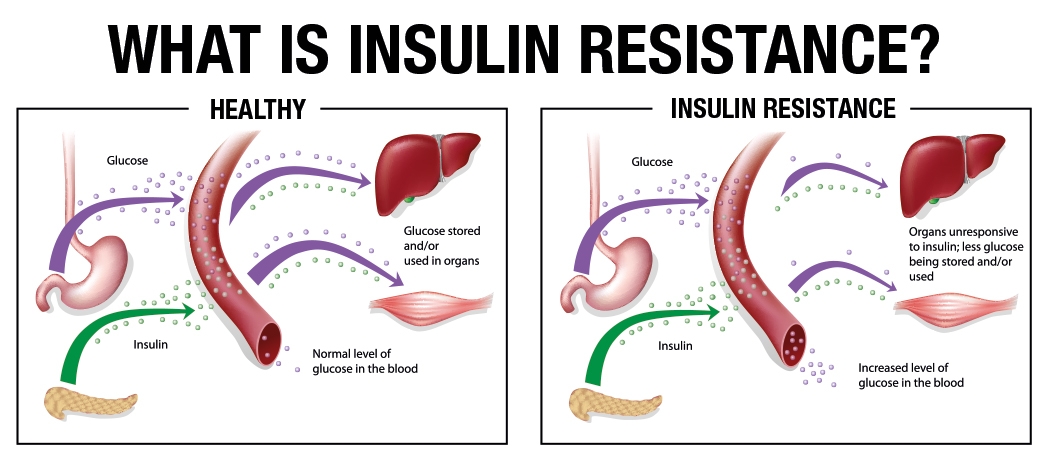
The pancreas produces insulin, which transports blood glucose into the cells (particularly skeletal muscle and fat cells). Receptors in the target cells enable access and the glucose is metabolised and used for energy. When circulating insulin levels are normal/above normal, but target cells are unable to receive it, this is known as insulin resistance. Insulin resistance is thought to have a genetic factor, but can be triggered by eating habits and lack of exercise, allowing blood sugar levels to rise.It will result in:-
- insulin accumulates in the bloodstream (hyperinsulinemia)
- glucose accumulates in the bloodstream (hyperglycemia)
- cells have to burn other fuel sources to make energy, generating a lot of metabolic wastes
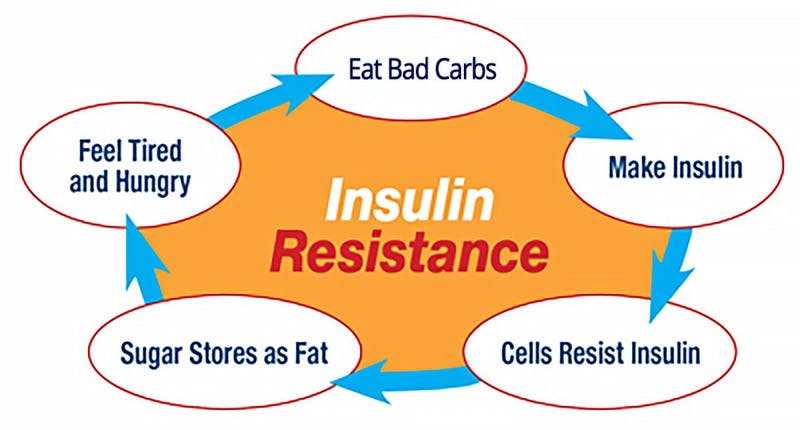
These 3 things, long term, will encourage the onset of type 2 diabetes and cardiovascular disease. Hyperinsulinemia can also be a contributing factor in the onset of PCOS.
The relationships between hyperinsulinemia and both metabolic syndrome and PCOS are complicated and often circular.
TREATMENT
Although there is no cure for PCOS, treatment may include:-
MEDICATION –eg.birth control pills, diabetes medication, fertility aids, anti-androgen drugs to treat symptoms such as excessive hair growth,acne, irregular periods and fertility problems
OVARIAN SURGERY – If medication doesn’t work laparoscopic ovarian drilling (LOD) may be recommended, where the androgen producing ovarian tissue is destroyed with heat.
LIFESTYLE CHANGES – 10 % body weight reduction with exercise and better nutrition can restore ovarian health
MASSAGE - Therapists who treat women of a childbearing age are highly likely to encounter clients suffering from PCOS or metabolic syndrome, and while false claims of fixing PCOS should never be made, sharing self help information can help to improve client outcomes. Massage will usually be appropriate for metabolic syndrome clients who control their condition through diet and exercise, but if there are any serious complications associated with it, then the treatment may need to be adjusted to accommodate any circulatory or urinary systems weakness.
BENEFITS OF MASSAGE FOR PCOS
- INCREASED CIRCULATION TO THE REPRODUCTIVE SYSTEM
Good blood supply to the reproductive system improves functioning, balances hormone levels and promotes a healthy sex drive. Femoral massage is a specific technique, involving application of pressure to the femoral artery to stimulate blood flow to the uterus and ovaries. The result of this is that blood accumulates in the iliac arteries, forcing blood to flow into the pelvic organs. (When released after 30-45 seconds, the blood should be felt flowing back down the leg.) Femoral massage is most effective just before ovulation.
- IMPROVED CONDITION OF THE OVARIES
Massage may reduce the thick, waxy capsule that forms across the cysts on polycystic ovaries.
- MORE EFFICIENT ENDOCRINE SYSTEM
Massage can improve endocrine function by:-stimulating natural endorphin release and neurotransmitters such as serotonin that both improve the mood and decrease the effects of stressreducing adrenaline, noradrenaline and cortisol levels all associated with the ‘fight or flight’ stress responsebalancing sex hormone levels that are often unstable in PCOS
- LOWER STRESS LEVELS
By reducing stress hormone levels, massage can also reduce the stress that can trigger PCOS symptoms. When someone feels more relaxed and less anxious, pain perception also tends to improve.
- IMPROVED IMMUNITY LEVELS
Inflammatory conditions such as PCOS require a well functioning immune system to heal. During a massage, white blood cells which fight infection build up in the blood stream.
PRECAUTIONS
- the pituitary, uterus and ovary reflex points on the feet may be hypersensitive in PCOS sufferers , but will also be beneficial. Communication about the amount of pressure is essential.
- the ovaries may be enlarged and vulnerable to bruising. Generally in women who aren’t pregnant, the ovaries are located low in the pelvis where they are out of reach during deep abdominal work. If the ovaries are enlarged and located higher than usual, the therapist must adapt techniques to avoid bruising, or keep deep abdominal work to a minimum. Improving the condition of the abdominal muscles and fascia by working obliquely rather than deeply is recommended.
